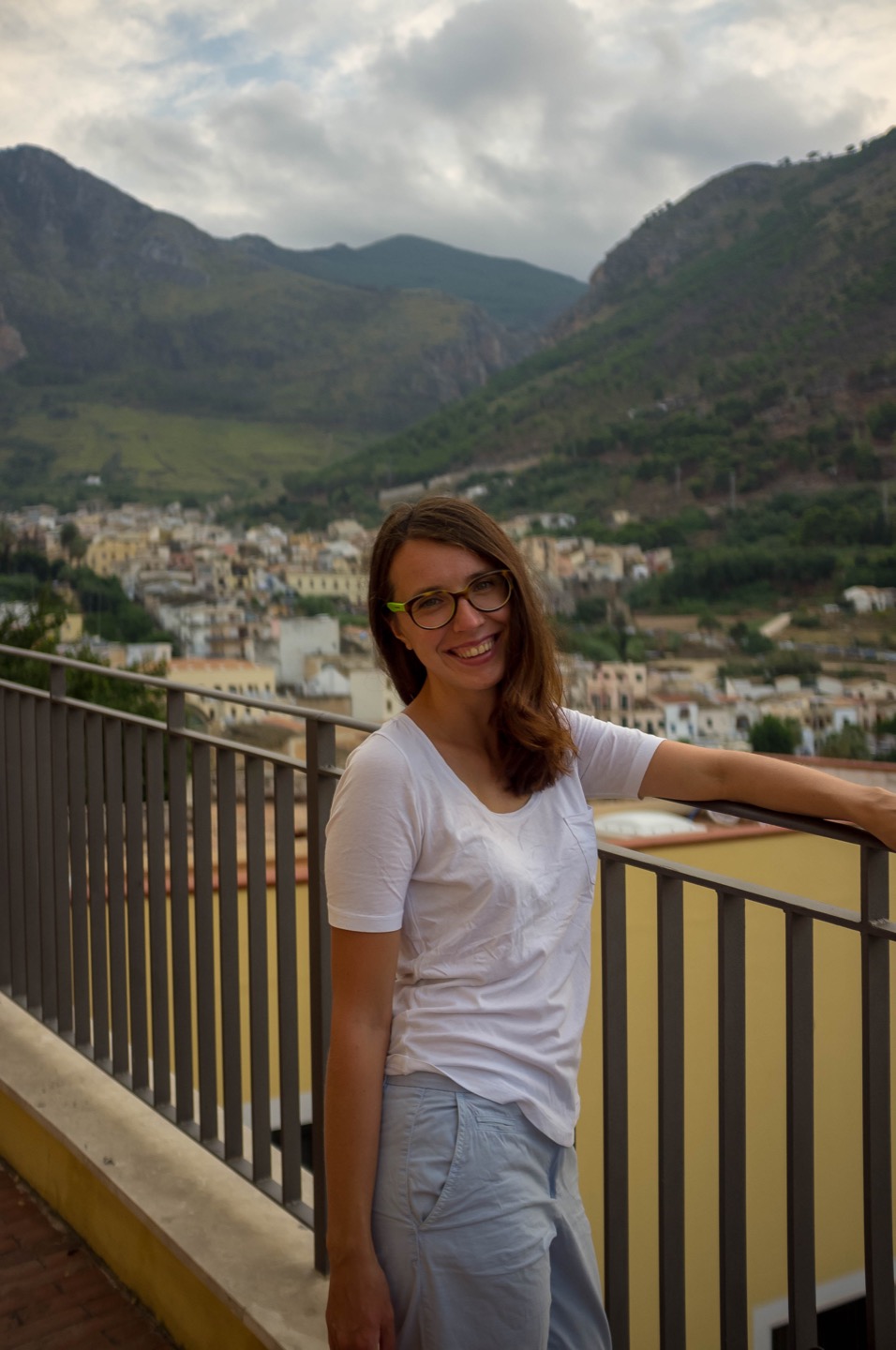Around Sicily
Egadi,
Lipari,
Sailing,
Sicily
Having rested and recovered since the crossing from Sardinia, we decided to use the rest of summer to sail the long way around Sicily, along the northern side, through the Messina strait and down the south side. Also hoping to visit both groups of islands along the way.
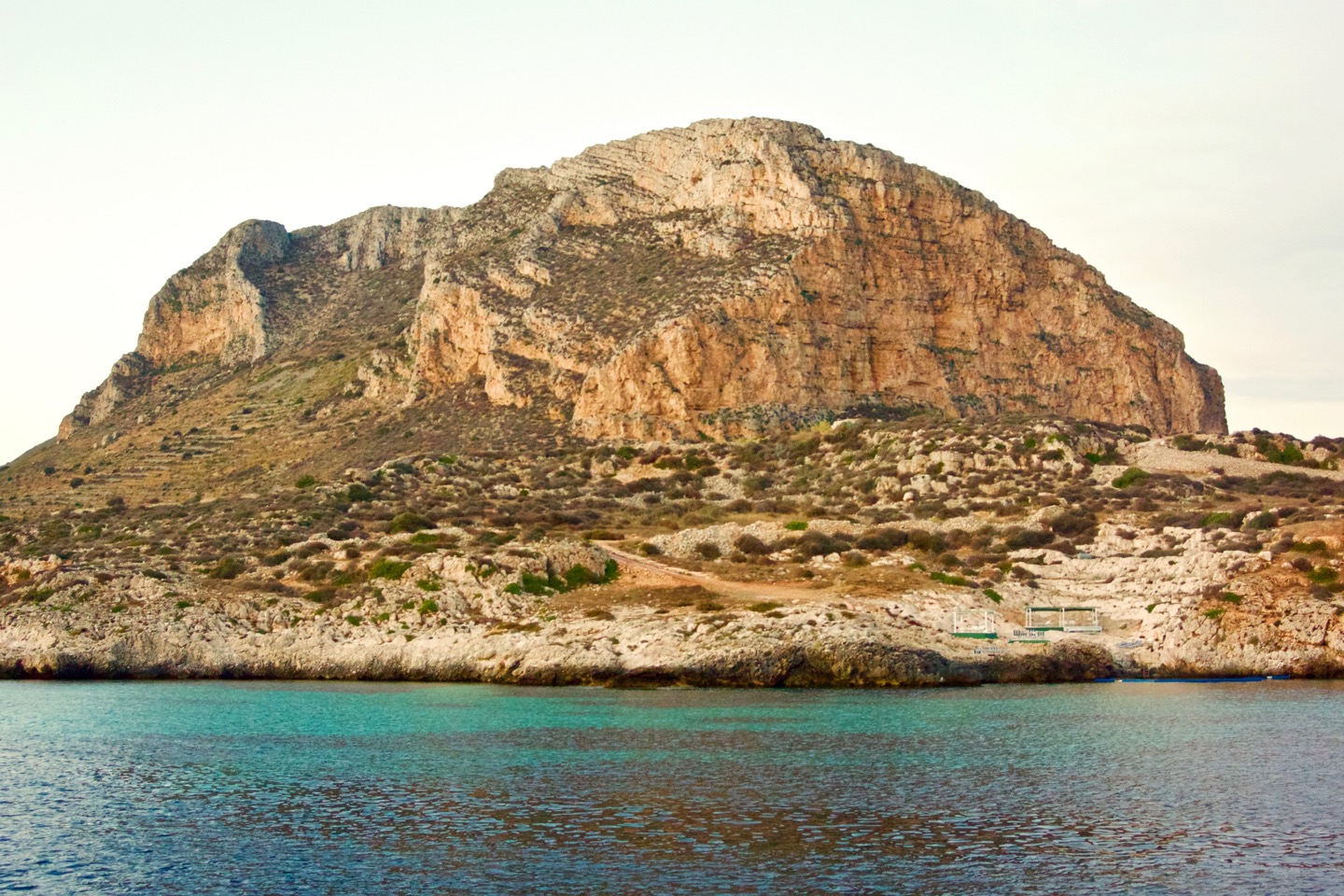
The first were the Aegadian islands (Isole Egadi), after the largest one of them. We sailed from Trapani and as the winds were northerly for a long time, we mostly hung around the south coast of Favignana, which had plenty of space. Once a big thunderstorm came past and we sheltered behind a tall mountain, anchoring in difficult Posidonia (tall seagrass).
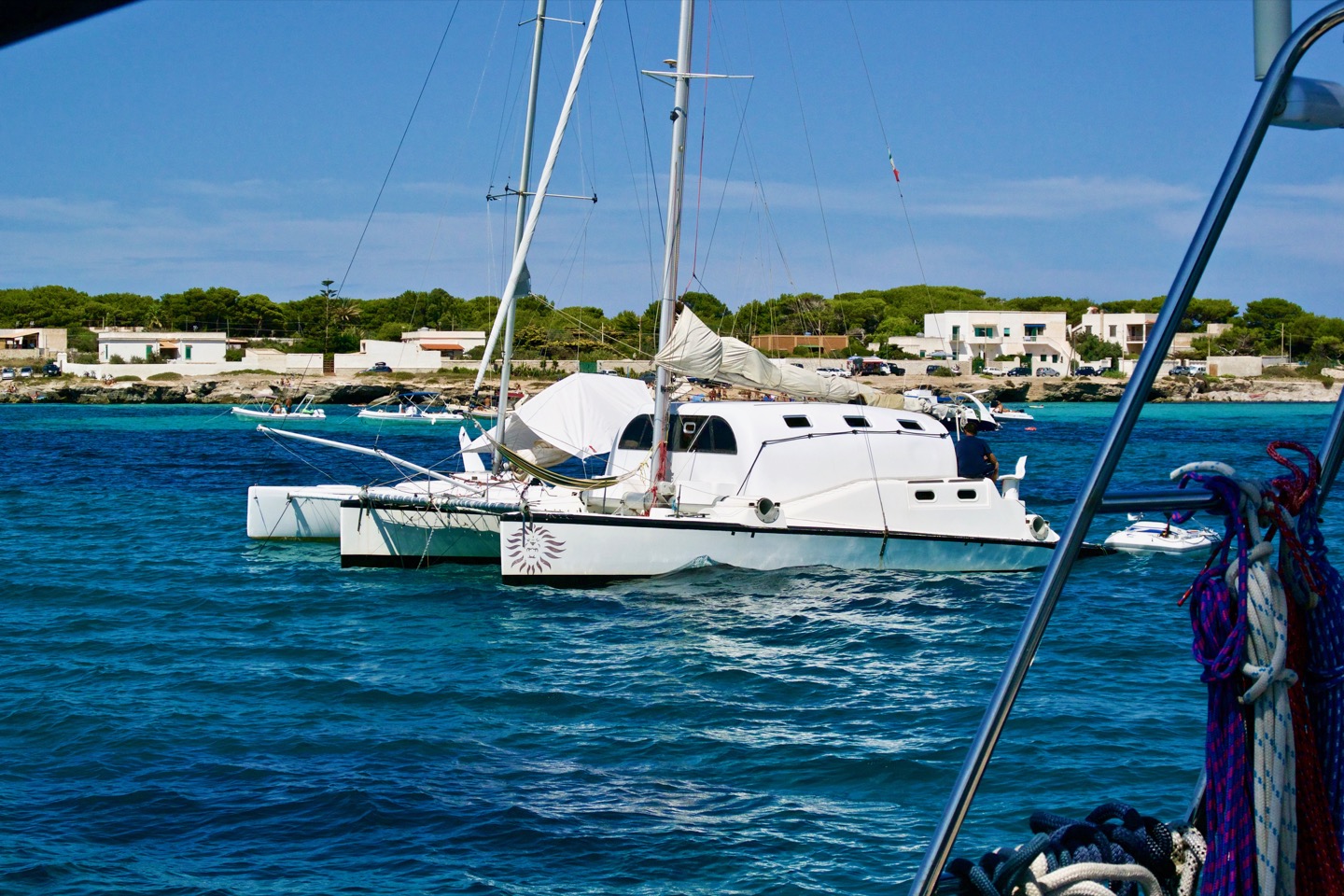
Our 25kg Rocna is a bit small to set in Posidonia unassisted, and doing it the normal way can take many tries before getting a good set, each time having to haul the anchor up again and clearing it of grass and roots. But if you can freedive, there's a better technique, which we've used a bunch of times by now. Drop the anchor on the grass without setting it. Healthy posidonia has very strong blades, and the anchor will typically just rest on top of it, which is why it has difficulty getting the tip under the grass and into the seafloor. But if you dive down, you can just pick it up, and either find a sandy patch and roll the Rocna into it, or if the grass coverage is complete, put the anchor upright and then jam the tip under the roots as hard as you can.
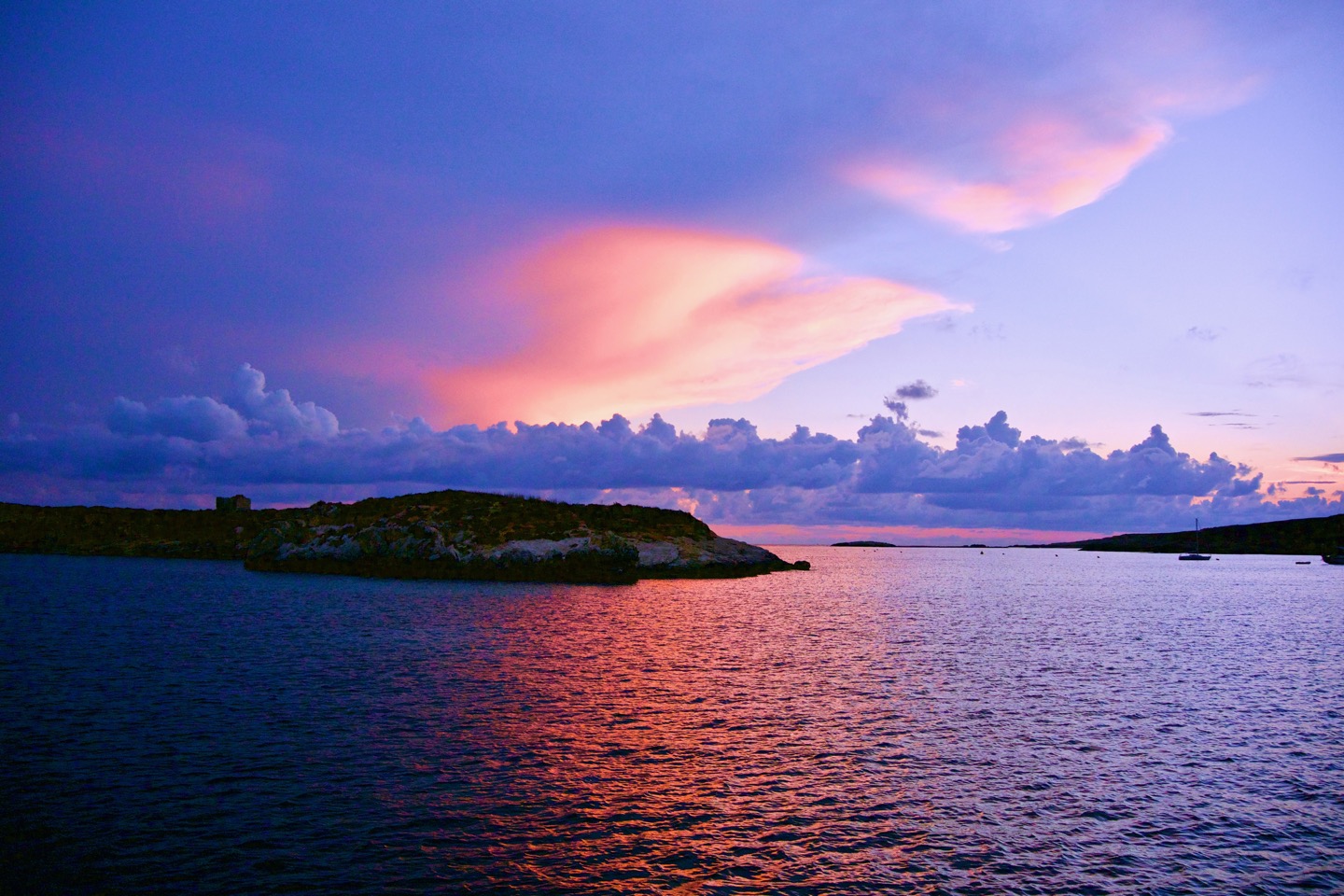
We used this technique here, with the added difficulty of the light already fading, so I had to take my diving flashlight down with me to see what was happening. Once the Rocna's tip is in, it's just a matter of signaling Elvyra at the helm to set it in reverse, slowly increasing the throttle while I'm in the water watching the anchor set. This works very well, is less work and much faster than repeatedly hauling the anchor up, clearing it and retrying, not to mention much kinder to the seagrass!
Another day, another thunderstorm, we fled to the same area and sat out a squall with absolute buckets of rain. We watched a few small rental RIBs arrive and toss their anchors in the shallows nearby. The squall forced them to fold their biminis - the ones that did not do so soon had the remains flapping in the wind. Now without shelter in the driving rain, they all had the same idea of using the small fibreglass lid of the RIBs bow locker to cower under, some gallantly using it as a far too small shield to protect their squealing female company. We found this quite amusing to watch from the safety of our sprayhood, but only until we realized we'd forgotten to close our own forward hatch and a hefty amount of rain was now in our cabin.
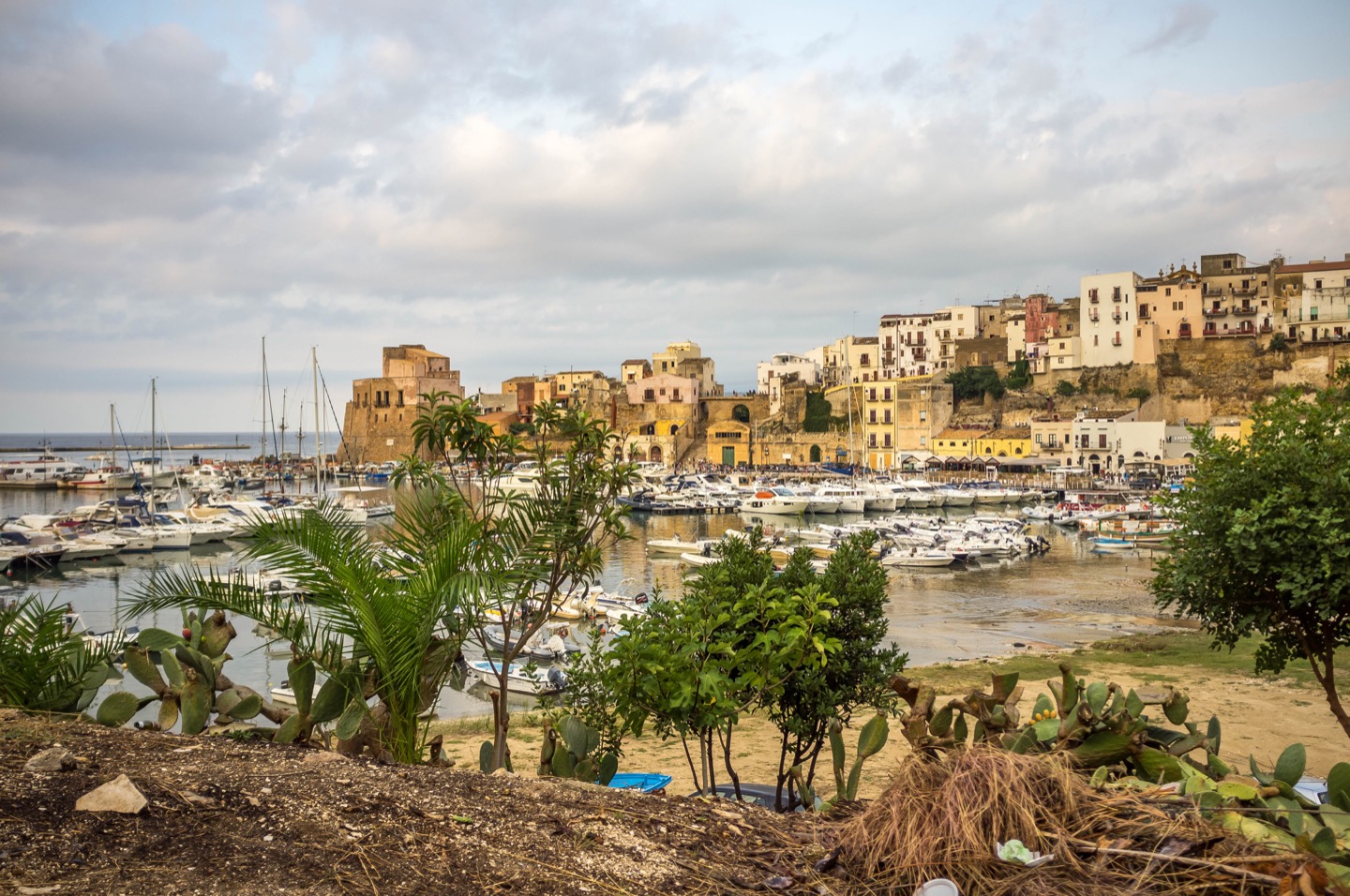
After a week here, which passed quickly, the wind finally turned and we could head around the NW corner of Sicily, past Trapani again and then around St. Vito lo Capo, where we got hit by another massive squall, high winds, pouring rain and lightning, only this time at sea. We checked out San Vito, but no shelter was to be had unless you anchored right in the marina entrance, and someone was already doing exactly that. We pressed on for Castellammare and negotiated a good price in their Club Nautico.
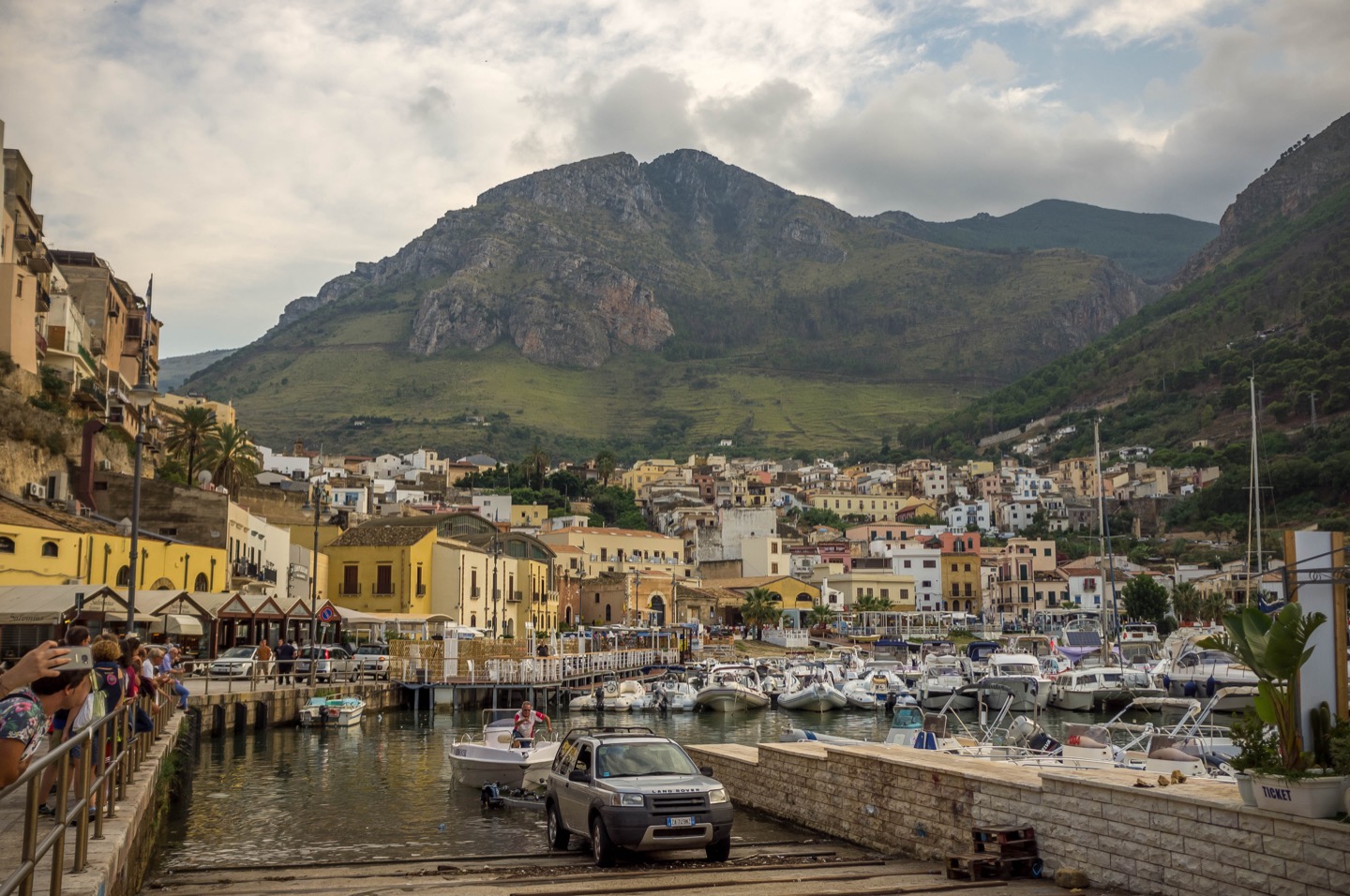
Castellammare del Golfo is a scenic but busy town on the slopes of an impressive, tall mountain. We marched up the very steep main road to the supermarkets and enjoyed the views and the fact that we were faster on foot than the deadlocked road traffic, which seemed to consist mostly of people taking their vehicles out for a spin, or perhaps a brake test going down that hill.

Onwards to Palermo, we rounded a big tall mountain near Capo Gallo, which blocked all the wind. We had the full mainsail up to stabilize the boat from rolling while motoring in the zero to five knots wind behind the mountain, but failed to notice the mountain range had a big gap. Suddenly there's 35 knots gusting down on us and before I could even release the mainsheet the boat had already rounded up and the noise of clinking dishes sounded up from the galley. Oops. We got the boat back under control, reefed the main severely and checked below - nothing broken! Phew. We anchored in Arenella, which was very busy with small boats and swimmers between them. The only marina in town we deemed affordable was full and the anchorage not secure enough, so we never set foot in town. Upon leaving, we got a big old power cable as parting gift when retrieving the anchor. This was quickly freed with the help of the emergency rigging cutter and hopefully no longer a hazard to fellow boats.
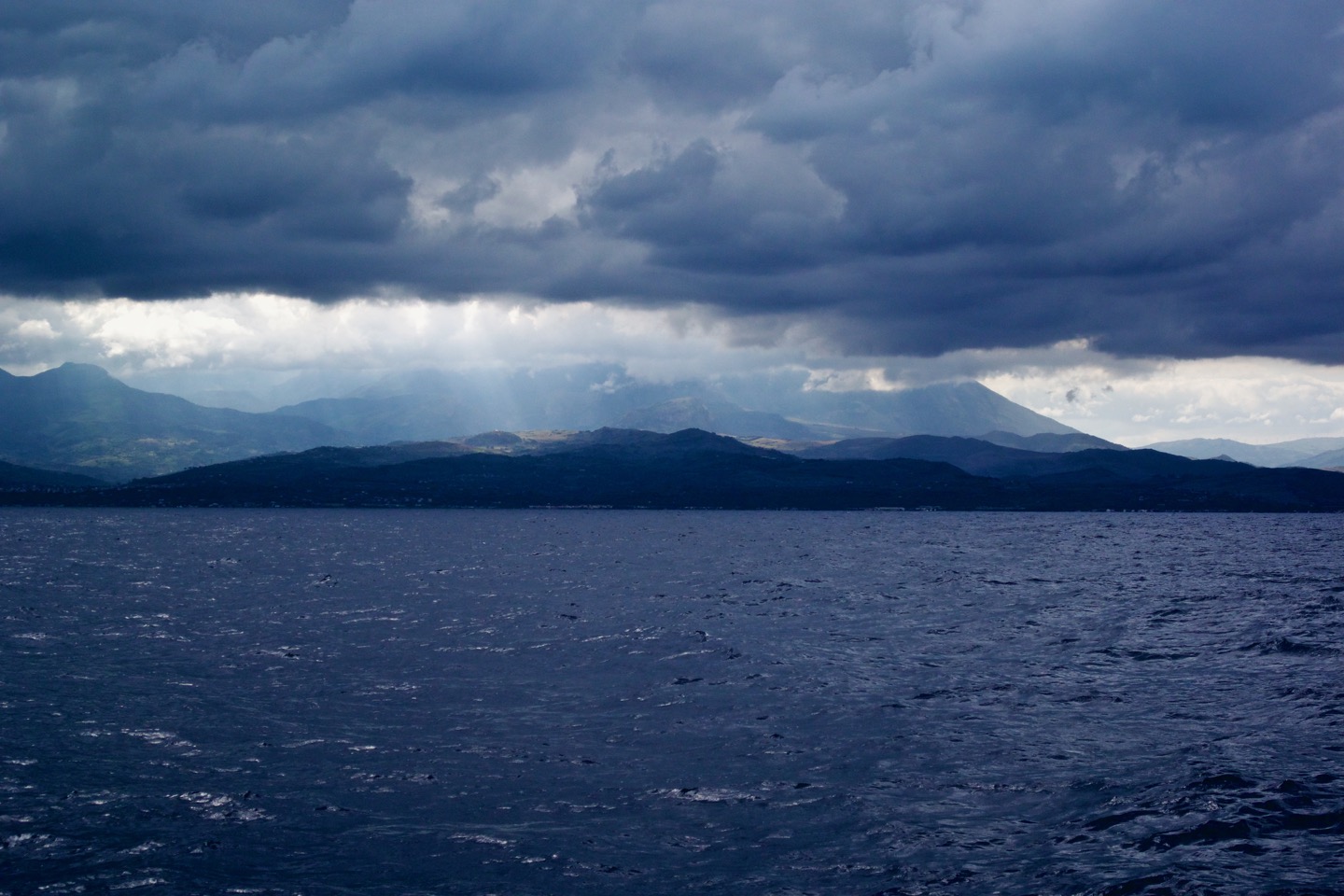
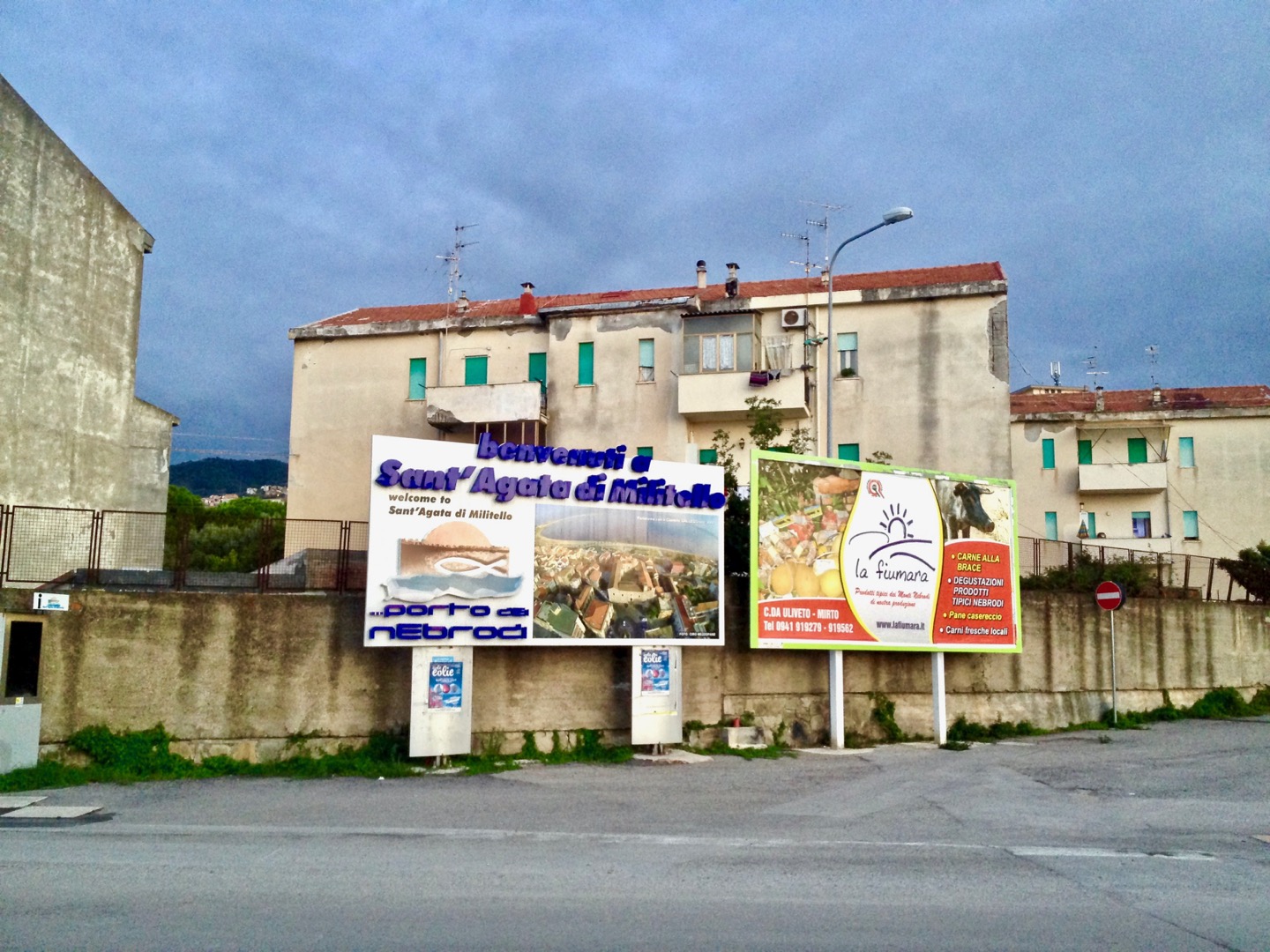
The north coast of Sicily seemed to be cursed with squalls and swell while we passed. At Porticello we rigged a bridle off the anchor chain to hold the nose in the swell and be able to sleep. At Cefalu we looked at anchoring in the harbour, but it had no breakwater against the NE swell and boats were bobbing around even in the marina part. At Sant'Agata di Millitello we got a cheap spot in the charter marina (weekdays only), very friendly staff, yummy pizza delivered to the boat and used the supermarket "shuttle", which consisted of grandpa in an old Mercedes driving us to the tiny family shop the daughter was managing. She guided us through the shop, convinced her reluctant mother behind the cheese counter to let us sample some wares and we bought their entire supply of milk, which was three litres. The harbour was big, mostly empty, yet the breakwater currently being extended. The town seemed a little destitute, with the marina a long walk along a swampy road with no sidewalk, but folk were very friendly and helpful.
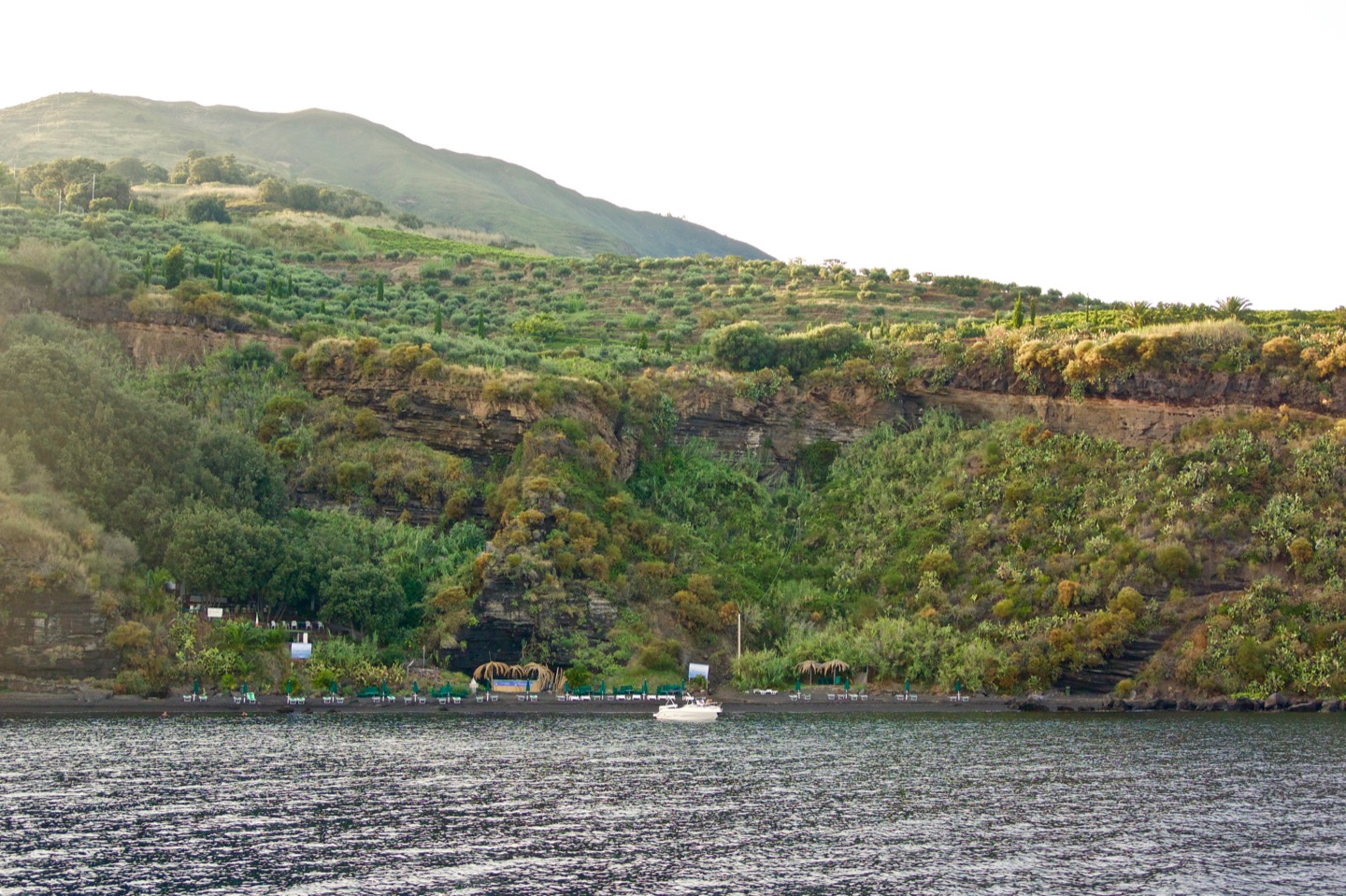
From here we left Sicily and headed north for the Aeolian islands (Isole Eolie, or sometimes also Lipari islands). These include several active volcanoes, difficult anchorages due to steep slopes and hyper-expensive docks fancying themselves "marinas". We sailed around fuming Vulcano (the one all other volcanoes are named after) and eventually found a spot on the SE side in front of a black sand beach. The beach had lots of empty lounge chairs, which I found odd, given the amount of tourists on these islands. I swam over to check it out and soon found out why. Turns out black sand in August sun gets really hot and I quickly hopped back in the water to cool my steaming feet. If you accidentally bought flip-flops in the wrong size, you can probably re-melt them to fit by walking around here for a few minutes. Just remember to run in the water before they become a permanent part of you.

When anchoring near volcanoes, it's important to not be downwind of a fuming crater, as the sulfur fumes can lead to false accusations amongst the crew. We crossed to Panarea and thought the water was rather polluted with grey styrofoam bits. After looking at the styrofoam a little closer, it turned out to be floating rocks. These are called pumice, and produced when boiling lava hits the sea and explosively expands into rock foam. I've used our little folding net to fish out a few as souvenirs. Then we managed to squeeze into a crowded anchorage on the south side and braved the challenge of not getting run over by tourist trippers whilst swimming.
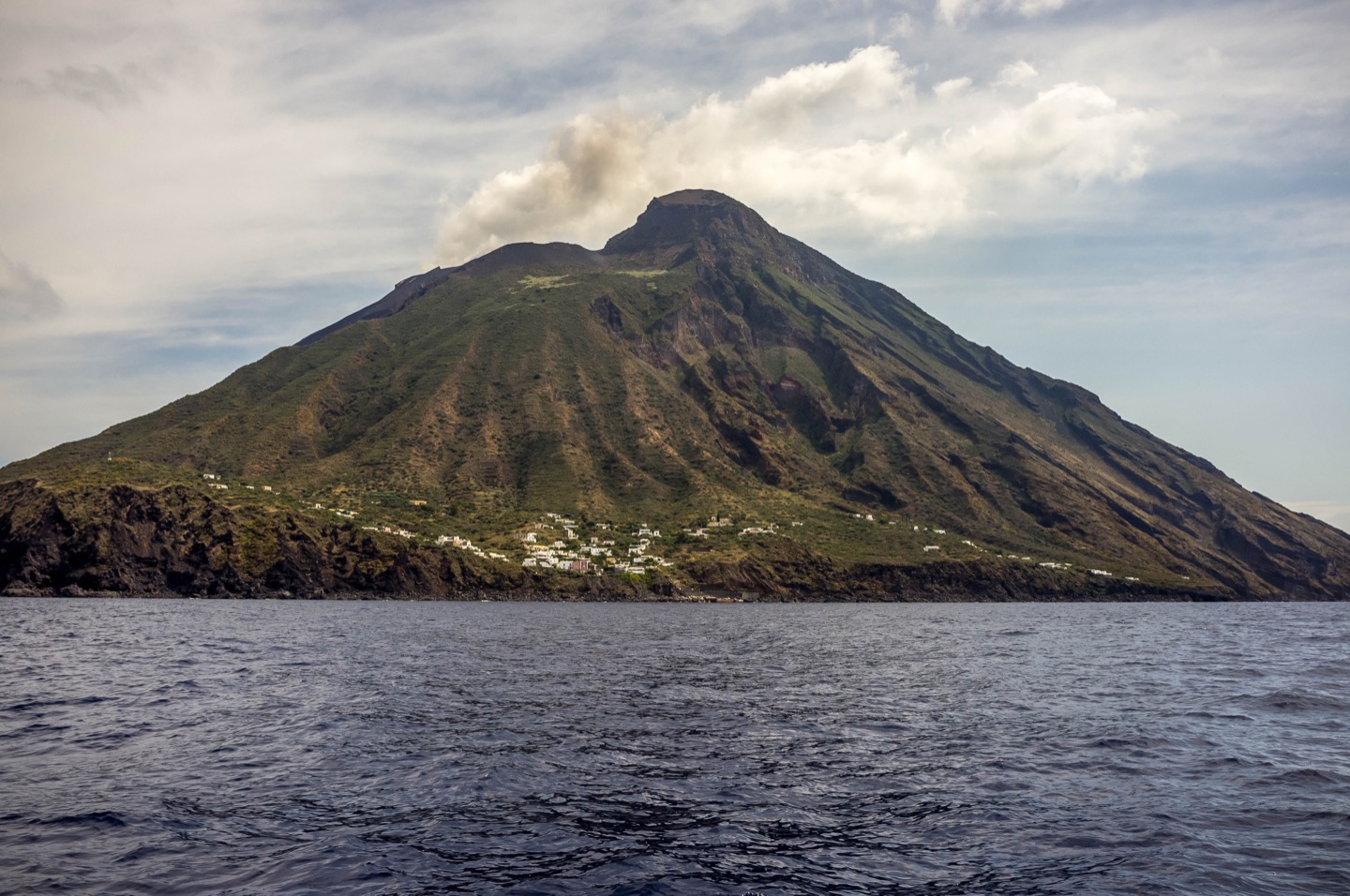
After a few nights here, Stromboli was the next destination. We had to get an early start, in the likely case we couldn't stay there. On the way, lots more pumice came floating our way, knocking along the hull. I fished out a fist-sized chunk and a few more until Elvyra complained that we had just about enough of the stuff on board now. We passed Stromboli on the west side, where the lava and rocks roll into the sea, and the volcano gave a timely pop, chucked out some rocks for us and we watched them roll down the side into the sea not far from us. We rounded the north side and expectedly found the few mooring balls occupied and the anchorage full with the handful of boats that can squeeze onto the small shelf nearby before it drops off to 100m. So unfortunately we wouldn't be able to stay the night and had to head back to the mainland.
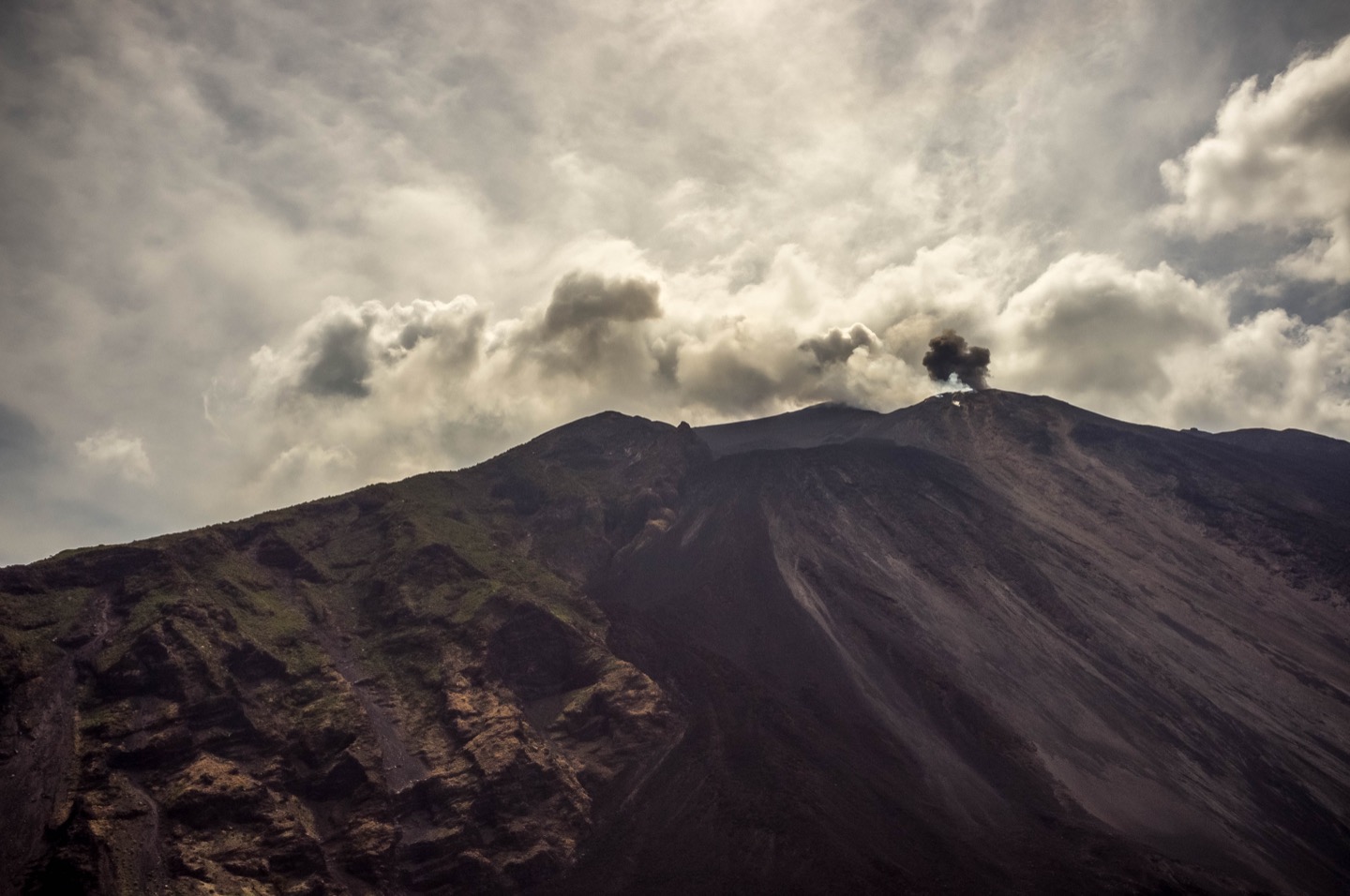
We found some wind for about half of that trip south and had to motorsail the rest. After a long day of 52 nautical miles, we made it behind a headland near Milazzo and hand-stuck our anchor into some Posidonia near a small hotel and spent the night there. The next leg would take us through the Messina strait, which needed some careful timing.
